The meeting at Alki Middle School was the public’s first chance to get a close look at plans from the county and state transportation officials
VANCOUVER — Three weeks after Clark County Council cleared the way for development on thousands of acres of land north of NE 179th Street near I-5 and the Fairgrounds, the public had a chance to pepper transportation officials with the county and the state about a slew of traffic improvements slated to happen over the next decade.
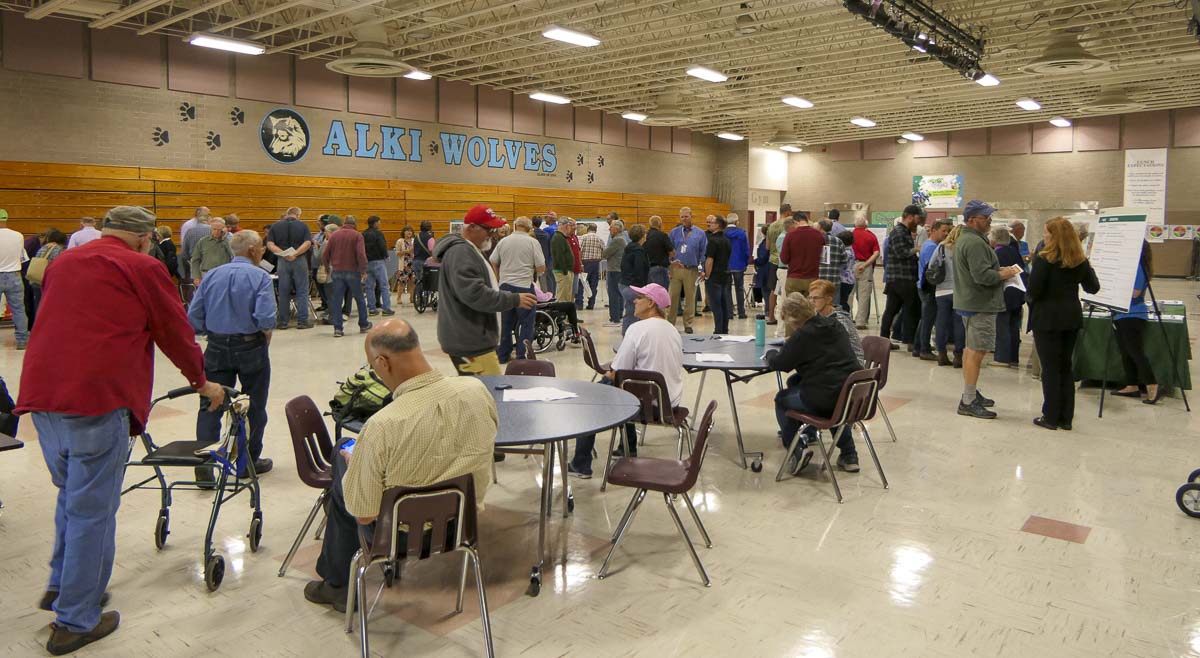
The agreement reached by the county will provide $66.5 million in funding for the first phase of projects, set to realign Delfel Road west of I-5 farther away from the freeway. Also, NE 10th Avenue north of 179th will also be moved to the east, to connect with NE 15th Avenue. Improvements are also slated for 29th and 50th Avenues where they intersect with 179th.
The public forum held Tuesday afternoon at Alki Middle School was the first real chance for residents to see initial concepts for those improvements, and question officials. Most of those questions centered around how a few alterations to existing roads and intersections could possibly handle the potential 12,000-plus new residents that may eventually come to the region.
“Just because they’re going to open up the ability to start development next year, doesn’t mean that the first house is going to pop up next year,” says Robert Klug, Transportation Division manager for Clark County Public Works. “And the homes are not going to pop up at the same time, they’re going to roll in over time, because the builders can only build them so fast and there’s only so many people who can buy them at the same time.”
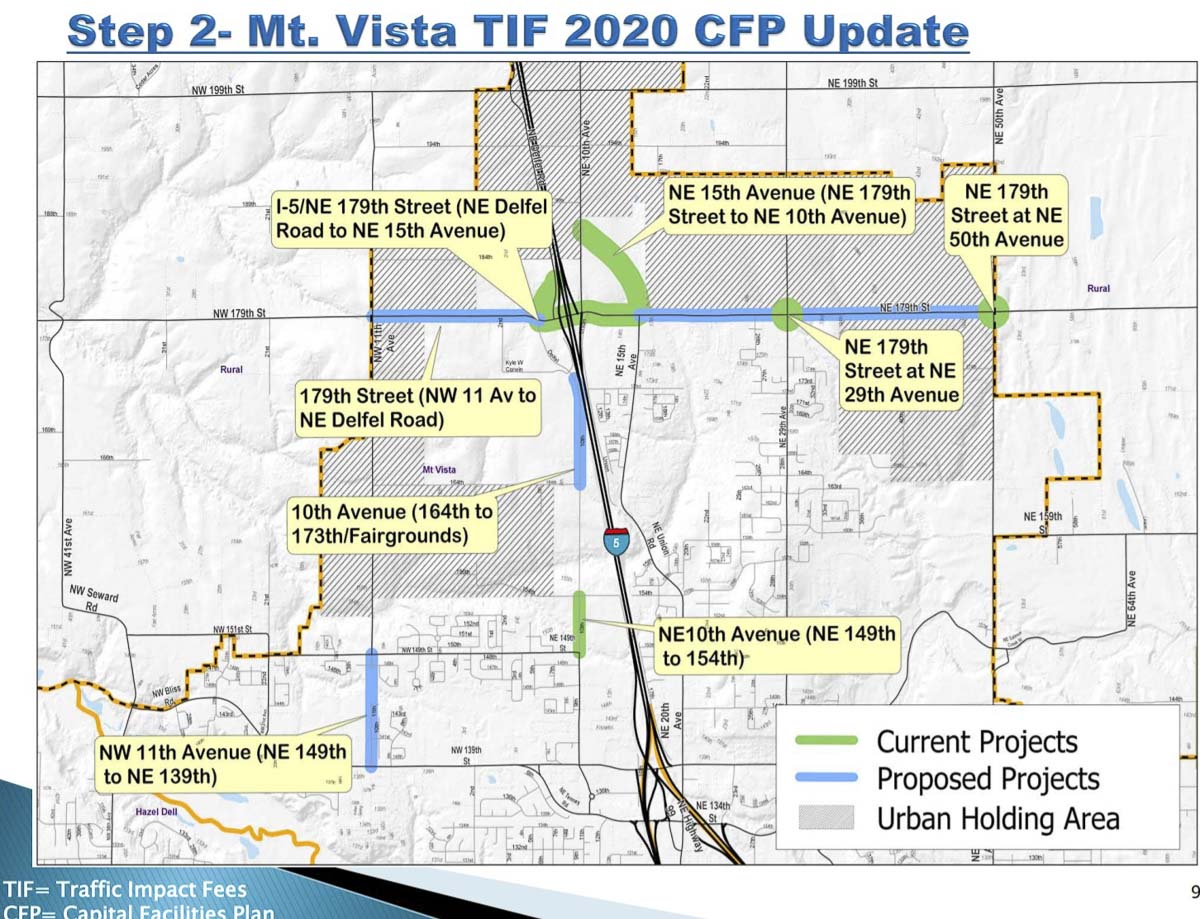
Klug says housing permits can take between 18-30 months to come through, meaning it likely won’t be until sometime in 2021 before residents see much upturned soil in the area. Still, that will happen at least a year-and-a-half before most of the major traffic projects begin.
“We’re going to be doing a very detailed analysis to determine what the effects are for capacity and safety of roundabout versus a signalized intersection,” says Klug of the work ahead of them. “Additionally we’re going to be looking at what the impacts are for real property, how much land do we have to acquire to build those intersections, what the stormwater needs are, are we getting into critical areas, and the design section and transportation section will work very closely in how we actually scope the best solution for the corridor, based upon all the needs, to find the least expensive way to build the capacity that we need.”
But that’s where Tuesday’s open house comes in. With the planning and design phase kicking off for the area, Klug says it’s necessary to hear from stakeholders and residents about their concerns and hopes for the project.
“It’s a matter of starting to define what the actual intersections in the corridor are going to look like, and how we’re going to build those,” says Klug. “And phasing for several years’ worth of projects, and the state’s project at the interchange, and all the county projects at the other intersections and locations.”
In other words, it’s a complex web of projects and developments that, ideally, need to work together in order to avoid wasted money. That’s partly why Washington State Department of Transportation (WSDOT) officials were also in the room.
“We are working very closely with them to find ways that we can mesh our project with theirs, to not waste anything,” says Klug.
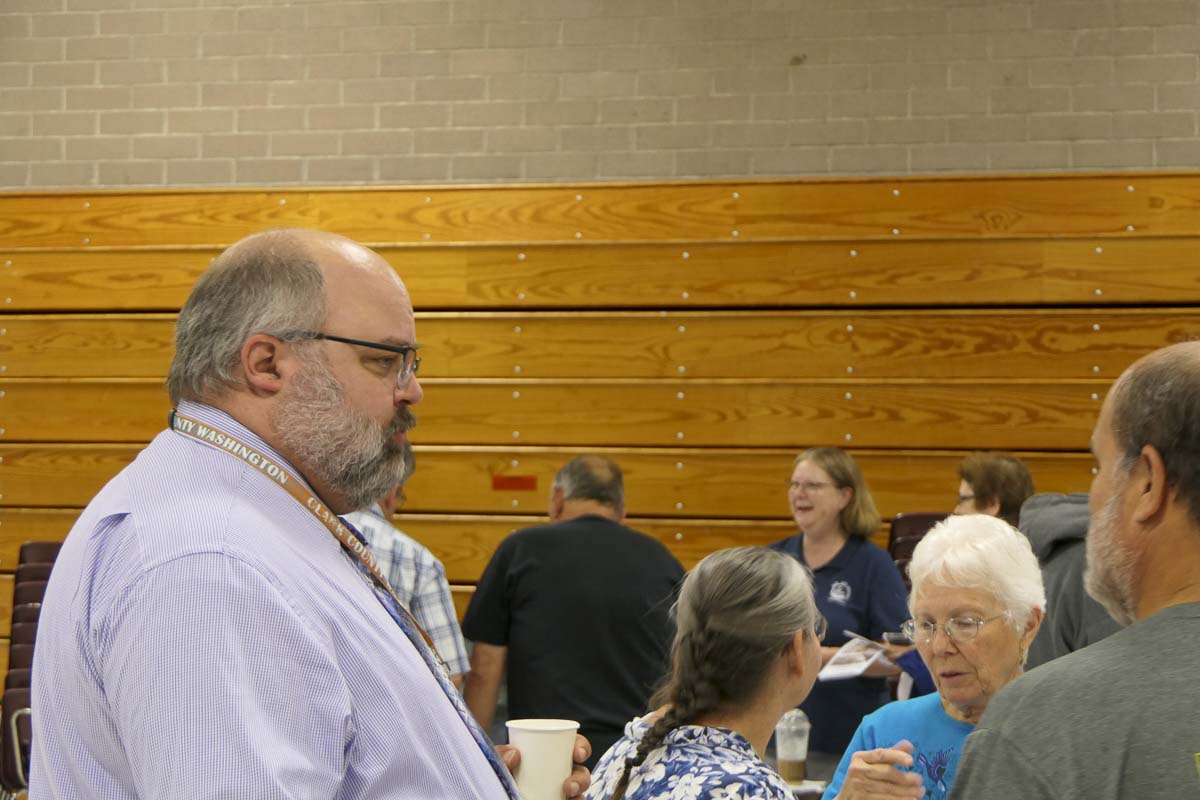
Funding for an estimated $50 million project to reconfigure the I-5 intersection at 179th has been approved, but won’t become available until 2023. Several efforts to move that funding timeline up have fallen short, but the legislature did approve $500,000 in 2018 to help with some of the pre-planning.
“That money was made available to do what we’re doing now, and that’s pre-study,” says Linda Peterson, assistant project engineer for WSDOT’s Clark County engineering office, “where we look at the overall 179th corridor as an entire corridor, so that whatever transportation improvements we make work seamlessly, no matter whether you’re at an intersection that’s a county intersection, or you’re at the interchange.”
Once funding becomes fully available in 2023 WSDOT will begin doing geotechnical studies, traffic analysis, and environmental impact assessment around the interchange.
“”That will all be happening over a 3-4 year period, and then construction can begin,” says Peterson. “We want to make sure it’s well thought out.”
But that also means that, under the current timeline, construction on the new freeway interchange won’t be complete until sometime in 2030. That means, barring a major economic recession, it will likely come after much of the potential development in the area is already well underway.
Peterson says they would love to have been able to complete the project before major development comes to the area, but they should have a pretty good idea of what the future needs will be when the time comes to build it, and be able to address those.
“We want to make sure that it’s planned so that whatever gets built works for that intertim period,” she says of the county’s planned projects, “so that when the follow-on work comes, then it all works well for the longer period.”
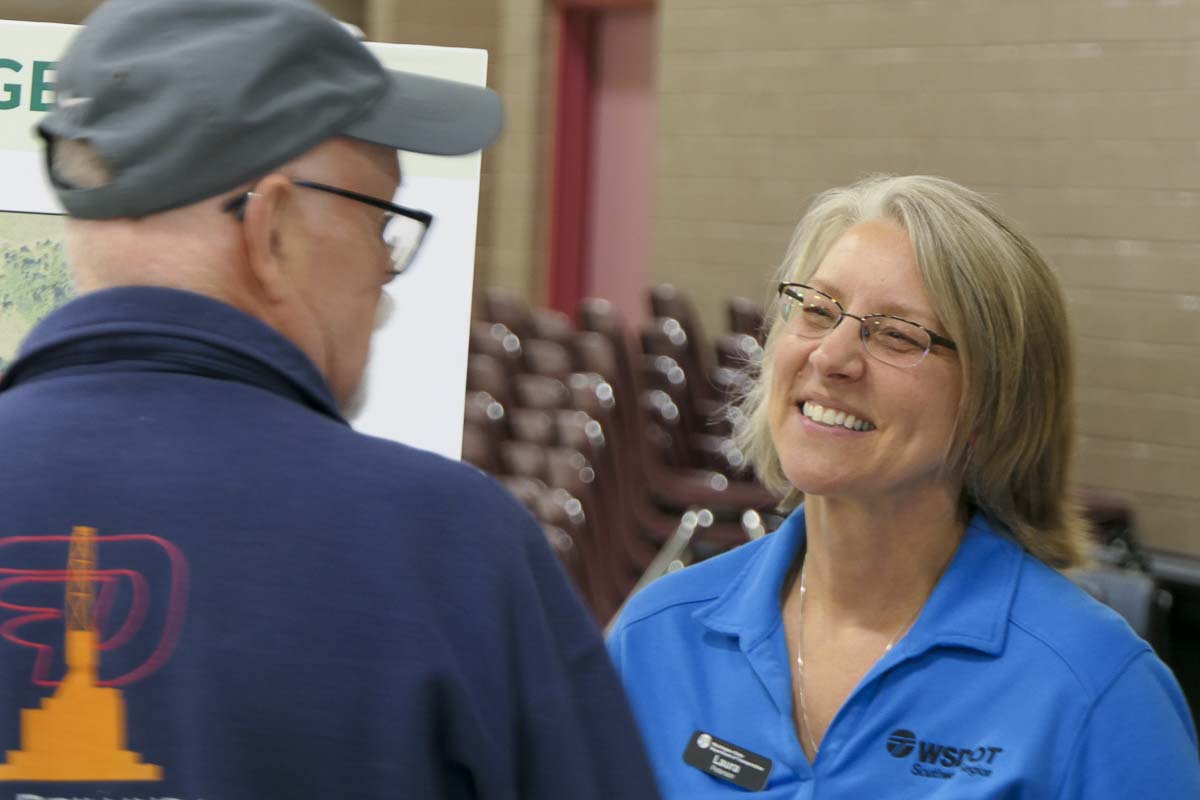
Klug and Peterson both said they had heard a number of concerns from the 100 or so people who attended the open house about capacity for future traffic in the area. At full build-out one estimate puts the increased population in the I-5/179th Street area at somewhere north of 12,000 people.
Klug says phase one projects should be able to keep traffic flowing by increasing capacity at major intersections in what’s known as a “skinny roads, fat nodes” engineering philosophy.
“You can get extra capacity on your roadway network by addressing the circulation at the actual intersections, and get kind of a turbo boost to capacity,” says Klug. “Then we still have to come up and build the rest of the roads in-between, but we can take care of the immediate needs for those two particular intersections, and the core of intersections from 15h to Delfel.
“The next level of projects coming along will actually add the capacity between all those segments,” he adds, “and take the capacity from NW 11th to build a five-lane road from NW 11th all the way to 50th Avenue.”
But those projects likely won’t happen until the back half of the next decade, around the time WSDOT is kicking off work on their freeway interchange.
“We’re doing what we can to work between the state Department of Transportation, the county and the developers to try and sync those up so that we’re having as little effect on the people that are going to be driving on those roads as possible,” says Klug. “But we have to go through a process to get right-of-way acquired, permits acquired, actually do the drawings to start the design process … and it’s going to take some time for us to get to the point where we’re actually building the projects.”
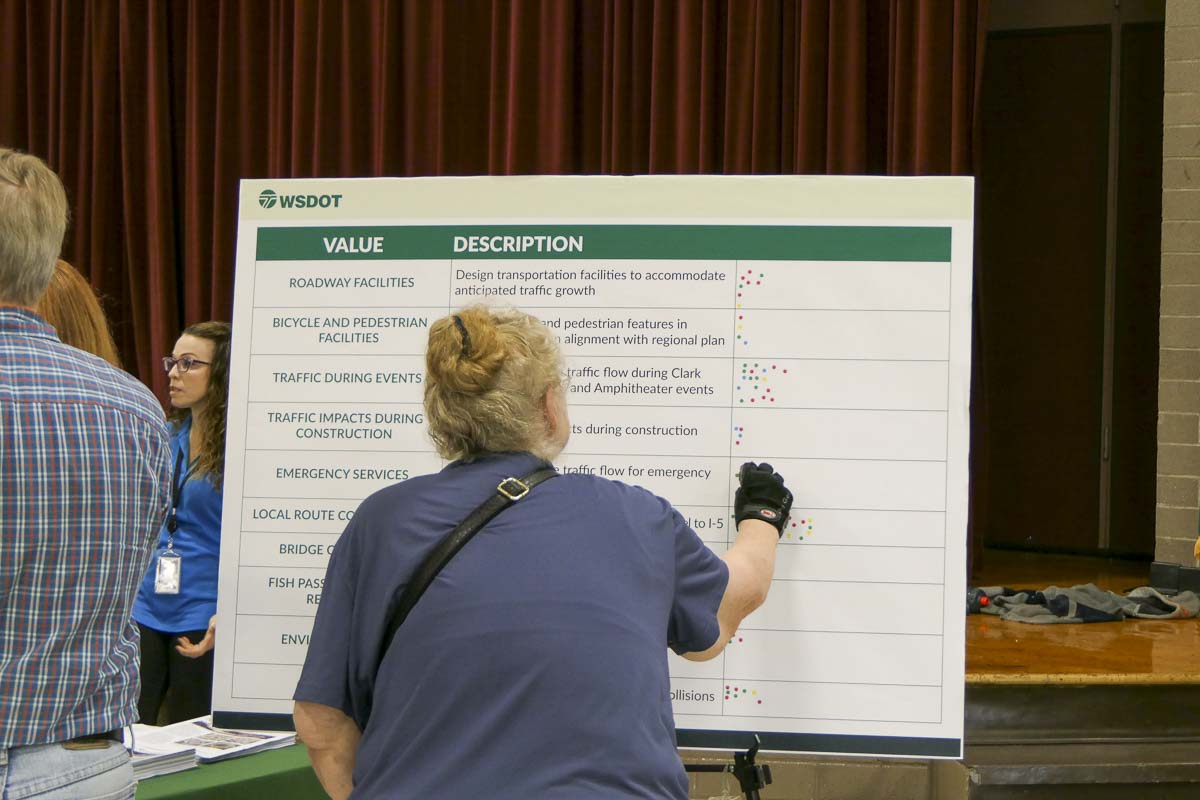
It’s anticipated that developer agreements in the area will include improvements to access from 179th, many of which will be required before building begins, so it won’t be entirely up to the county to create all of the added traffic capacity in the area.
Despite the fact it will be years before development begins in earnest in the last swath of undeveloped land in the city of Vancouver’s urban growth boundary, officials said public input will be an invaluable part of the process.
“Once we get to design, that helps to inform that process,” says WSDOT Communications Manager Tamara Greenwell. “So we’ll archive that and keep it available so when that process begins we have an idea what’s important to the folks who live in that community.”
As for concerns about the freeway interchange project, Peterson says their goal will be to have as little impact on the area as possible.
“We go to great lengths to find ways to either build a detour, or build at night, or whatever we need to do for that specific site to minimize public impact.”
For more information on the county’s building projects, you can visit their project website here.
For more details from WSDOT on their plans for the I-5/179th Street interchange, including several concepts of how the revised interchange could work, head here.




